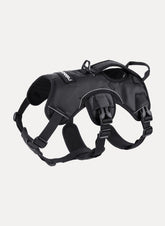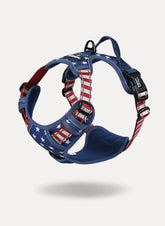Dog Car Barrier vs. Crate: Which Is Better?
Traveling with dogs can be one of the greatest joys of pet ownership. Whether it’s a weekend getaway or a cross-country road trip, bringing your puppy along can make the experience all the more special. But with that joy comes responsibility—specifically, keeping your dog safe, secure, and comfortable in the car. Two of the most popular options for canine car travel are dog car barrier and dog crate So which one is better for your needs?
1. Safety: Protecting Your Pup (and You)
Using a dog car barrier is a simple and effective way to keep your pup safely in the back seat or cargo area. It prevents them from jumping into the front seat or leaning into the driver’s space—two common behaviors that can easily cause distractions. By limiting your dog’s movement, a barrier helps reduce the risk of accidents and allows you to focus fully on the road.
In contrast, a dog crate offers a completely enclosed space. Like barriers, crates restrict your pet’s movement—but high-quality, crash-tested crates go a step further by providing outstanding protection in the event of sudden stops or collisions. They help shield your dog from being thrown against the back of a seat or any other interior surface during impact.
If you choose to use a car barrier, pairing it with a dog car harness—ideally one with a vertical handle for secure attachment—can provide additional protection and peace of mind while traveling.
That said, it’s worth noting that not all dogs take easily to crates. Because crates are fully enclosed, more timid or anxious pups may find them stressful at first...
2. Comfort: Happy Dog, Happy Ride
Compared to dog crates, acar barrier gives your pup more room to move freely in the back seat or cargo area. They can stretch out, sit up, lie down, or simply enjoy the breeze from an open window. For playful and active dogs, this open setup is often far more enjoyable than being confined in a crate.
That said, many dogs who are crate-trained find comfort in the enclosed space of a travel crate. Puppies especially tend to feel secure in a cozy, den-like environment—especially when there's a soft bed inside. However, for dogs who aren't used to crates or who experience anxiety in small, enclosed spaces, a crate can become a source of stress during travel.

Another thing to consider is that dogs perceive time differently than we do. While the difference between a barrier and a crate might not be noticeable on short drives, it can become much more significant during long road trips. A dog car barrier allows for greater freedom of movement, which can help prevent boredom, anxiety, and restlessness over time—making for a more relaxed and enjoyable journey for both you and your furry co-pilot.
3. Convenience: Installation & Storage
Dog car barriers are typically easy to install and remove, making them a convenient choice for pet parents on the go. They can be stored neatly inside your vehicle and pulled out only when needed. Most designs take up very little space, and Rabbitgoo’s upgraded triple folding dog car barrier takes space-saving to the next level—offering a compact, foldable design that makes storage even easier and more efficient.
Dog crates, by comparison, tend to be bulkier and require more effort to set up and stow away. This is especially true for larger dogs—their crates can be heavy and cumbersome to lift in and out of the car. Crates also occupy a significant amount of interior space, which can be inconvenient for longer trips, especially when you’re traveling with passengers or luggage.
4. Cost Considerations
Dog car barriers are generally more budget-friendly than high-quality crates. A well-made barrier typically costs less than a crash-tested travel crate, yet still offers strong safety and functionality. Most barriers are made of durable metal, making them wear-resistant, easy to clean, and less likely to trap dirt or pet hair over time.
Dog crates, especially those designed for travel and crash-tested for safety, can be a significant investment. And if your dog refuses to use the crate, it could end up being a costly waste. Crates can also be trickier to clean, with more hard-to-reach corners that may collect dirt and odors. However, for frequent travelers or pet owners who prioritize maximum safety, a high-quality crate might still be worth the cost.
So... Which One Should You Choose?
There’s no one-size-fits-all answer, but here’s a simple breakdown:
Choose a Dog Car Barrier if:
- Your dog likes more space to move
- You want a more affordable and flexible option
- You need to limit distractions while driving
- You switch cars often and need easy installation
- You use it frequently and have high cleaning needs.
Choose a Crate if:
- Your dog is crate-trained and feels secure in enclosed spaces
- You want maximum crash protection
- You're planning long trips and want consistency for your pup
Final Thoughts
Whether you choose a dog car barrier or a crate, what matters most is your pet’s safety and well-being. Consider your dog’s size, behavior, and comfort level, as well as your own travel habits. And no matter which solution you go with, don’t forget the basics: harness your dog, take frequent breaks, and bring water, treats, and toys for the ride.








